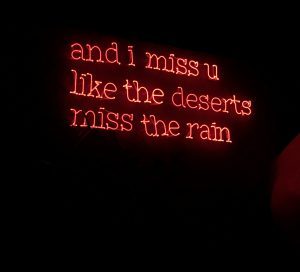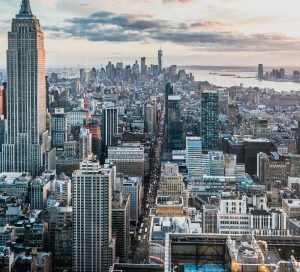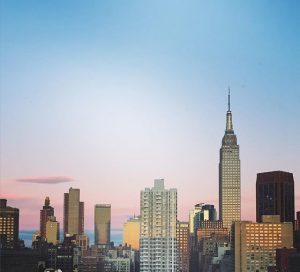I live in Brooklyn, New York where in some sections gentrification has shuttered Black-owned businesses and displaced families of color. But whenever I head uptown to Harlem – its storied blocks lined with handsome churches and brownstones and The Apollo Theater marquee shining like a beacon of hope over the hustle and bustle of 125th Street – I relish how it still feels like an undeniably Black and proud neighborhood.

Harlem, NYC at 125th Street. (Photo Credit: Jean Philippe Delberghe)

Explore Harlem on your next trip to NYC. (Photo Credit: Nic Y.C.)
The Harlem Renaissance in the 1920s and 1930s solidified the upper Manhattan neighborhood as a Mecca of Black culture and thought leadership. In the 1950s and 1960s it was a central location in the civil rights movement where Martin Luther King Jr. and Malcolm X both preached and marched. During these periods, whether we were creating or protesting, African Americans had an independent voice, and Harlem remains a place where Black folks are free to express themselves.
Want to experience Harlem for yourself? Well, take the A train of course, and let us be your guide.
Harlem, Where the Past Meets the Present
During the peak of the Great Migration in the 1920s, African Americans seeking employment opportunities and a better way of life flocked from the rural South to the industrialized North in large numbers. In New York City, Harlem was one of the most popular destinations, particularly for writers like Langston Hughes and Zora Neale Hurston, who found their tribe. During the roaring 20s, jazz was also all the rage in Harlem, and bandleaders Duke Ellington, Count Basie, and Cab Calloway had that swing. Some of these Harlem Renaissance luminaries are featured in Paul Deo’s eye-catching folk art mural “Planet Harlem” (at the corner of West 126th Street and Malcolm X Boulevard), alongside other famous African Americans with a connection to Harlem like native son James Baldwin, East Harlem-born beauty Cicely Tyson, and President Barack Obama, who lived in the neighborhood while he attended Columbia University.

The Planet Harlem mural. (Photo Credit: Paul Deo)
Another landmark and meaningful piece of Harlem street art is Swing Low: Harriet Tubman Memorial (at the crossroads of St. Nicholas Avenue, West 122nd Street, and Frederick Douglass Boulevard), a commanding bronze sculpture of the Underground Railroad conductor created by African-American sculptor Alison Saar. To learn even more about the neighborhood’s culture and history, spend an afternoon browsing collections, exhibits, and archives at the The National Jazz Museum in Harlem and the Schomburg Center for Research in Black Culture (check out the nicely curated gift shop).
On select Wednesday nights, daytrippers can catch the long-running Amateur Night at the Apollo, the talent competition a teenage Ella Fitzgerald won in 1934. Then come Sunday, attend morning service at Abyssinian Baptist Church, an influential church alternately led by Rev. Adam Clayton Powell Sr. and Rev. Adam Clayton Powell Jr.

When in Harlem, check out the iconic Apollo Theater. (Photo Credit: Robin P.)
One thing is for sure — when in Harlem, you have to sample the city’s best Southern-inspired cuisine. Top soul food picks include Amy Ruth’s, Melba’s, Sylvia’s, Red Rooster, and Seasoned Vegan. Before you bid adieu, join neighborhood Dapper Dans and sophisticated ladies for live music and a night cap at the legendary Minton’s Playhouse, founded by saxophonist Henry Minton in 1938 and where jazz greats Dizzy Gillespie, Thelonious Monk, and Charlie Parker honed and perfected bebop.
Still Hungry? 3 Black-Owned Eateries to Support Now
Named after Harlem’s affluent Sugar Hill section, Sugar Hill Creamery specializes in handmade, small batch ice cream and non-frozen dessert in both seasonal and classic flavors.

Take the A train up to Harlem when in NYC. (Photo Credit: Kaysha)
Come to Harlem Hops, Manhattan’s first completely Black-owned local craft beer bar, for a wide variety of brews, bar bites, and live DJ beats.
The island vibes are genuine at LoLo’s Seafood Shack, known for tasty seafood and comfort food dishes inspired by equal parts Cape Cod and the Caribbean.
Check out the rest of our Black History & Culture blog series by following the tag below.




